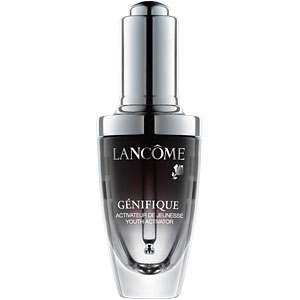โรคผื่นคัน ภูมืแพ้
Nettle rash (hives) or URTICARIA
งวดนี้หยุดพักเรื่องความงามซักนิดฮิๆ
พอดีเราเป็นโรคนี้อยู่เป็นๆหายๆ เลยไปหาเอาข้อมูลมาให้เพื่อนๆได้อ่านกัน เผื่อใครเป็นโรคคันๆๆๆแบบนี้บ้างโรคนี้เป็นโรคแบบ ลมเพลมพัด หาสามาเหตุได้ยากมาก เจาะเลือดก็แล้ว งดกินอาหารแต่ละอย่าง(จนผอมไปโดยปริยายไม่ต้องเพิ่งยาลดความอ้วน) ก็ยังหาสาเหตุไม่เจอ หมอให้ทดลองกินยาแก้คันทุกชนิด เอาไม่อยู่ แต่ Telfast 180mg. เอาอยู่ ใครๆที่เป็นโรคนี้อยู่คงรู้ดีว่าน่ารำคาญแค่ไหน ถ้าเป็นทีก็จ้ำแดงไปทั้งตัว24ชม.กว่าจะยุบ แล้ว ตุ่มคันอันใหม่ก็ขึ้นมาซ้ำต่ออีกก็คันตามเดิม เป็นทุกที่ทั่วร่างกาย เวลาเราเป็นเราต้องคอยอาบน้ำเย็นเพราะหมอบอกว่าถ้าอาบน้ำร้อนจะยิ่งทำให้เส้นเลือดพองตัวอาการคันก็จะยิ่งกำเริบ คิดดูนะเราอยู่ต่างประเทศอากาศหน้าหนาวต้องมาอาบน้ำเย็นฮือๆๆๆร้องไห้เลย แต่ก็อย่างว่าลมเพลมพัดอยู่ๆจะหายก็หายเฉย ก็ต้องรอว่าเมื่อไหร่มันจะกลับมาเยี่ยมเราอีกจร้า
ดูรีวิวเก่าๆเราได้หัวข้อ ดีท็อก ภูมิแพ้ หายสนิท
What is nettle rash?
Nettle rash (also known as urticaria) is composed of reddish itchy weals or swellings in the skin similar to those resulting from contact with stinging nettle. Urtica is the Latin word for nettle.The rash can vary in shape and size. It can be very itchy and usually goes away within 24 hours. Nettle rash may occur repeatedly or as a single episode.
What causes nettle rash?
In about 90 per cent of cases there's no apparent cause. Sometimes, however, it's possible to identify the cause of the nettle rash. It most commonly appears to be because of an allergic reaction.Any of the following may trigger symptoms:
- a particular kind of food that causes an allergy. Eggs, nuts, strawberries and seafood are some of the common culprits.
- contact with pollen or fungal spores
- medicines, most commonly, non-steroidal anti-inflammatory drugs (NSAIDs), antibiotics, and ACE-inhibitors
- insect bites
- infections, which may be caused by viruses, parasites or bacteria
- contact with plants such as stinging nettles
- contact with animals or creatures, such as stinging jellyfish
- physical stimuli, such as feeling cold or warm, sunlight, water, sweating or pressure
- substances, such as perfumes, preservatives, colourings, nickel or tar.
The rash itself is due to a local build up of an excessive amount of fluid in the skin (oedema). In severe cases this may be followed by swelling in other parts of the body as well.
If swelling occurs around the eyes, lips, tongue, larynx, hands or genitalia – it's called angioneurotic oedema.
What are the symptoms of nettle rash?
- Nettle rash usually starts out as an itchy spot on the skin.
- After a few minutes the weals develop into areas of reddish blisters of varying sizes.
- The rash usually lasts for about two to three hours and can then disappear only to return in a different place.
How do you differentiate between the different types of nettle rash?
Nettle rash is differentiated according to the cause of the rash and whether it has appeared suddenly or represents a chronic condition, such as attacks that last for more than a month.Acute nettle rash
In cases of acute nettle rash, the attack begins within an hour of exposure to the allergen, so it's often possible to work out what has caused it. Symptoms will appear every time the individual is exposed to that particular allergen. The majority of acute cases last just 24 to 48 hours and certainly not more than 6 weeks.There's usually no need to call the doctor for acute cases of nettle rash. The patient is able to find the cause of the rash and follow it up with home treatment. In more severe cases, however, it may be necessary to consult a doctor.
Children and young adults are particularly prone to repeated attacks of nettle rash.
Acute nettle rash can be divided into allergic and non-allergic (physical) nettle rash. Both types present immunological reactions.
Chronic nettle rash
Chronic cases are, by definition, more difficult to treat and often need long-term treatment.With chronic nettle rash (when the rash lasts for more than six weeks), it's advisable to contact your GP for further advice – and if appropriate, get a referral to a skin specialist (dermatologist).
Fortunately, this chronic form is uncommon.
In about 90 per cent of cases, no cause can be found for the symptoms. This kind of nettle rash is called idiopathic urticaria. In the other 10 per cent of cases, the substance (such as nickel or perfume) causing the allergy can be identified.
In extremely rare cases, urticaria may be related to a more serious underlying medical condition.
If a thorough examination shows that there is no apparent trigger for the chronic nettle rash, do not be alarmed.
Chronic nettle rash can be treated, and in about half of all cases the rash disappears by itself within six months. But sometimes the condition may be resistant to treatment and persist for years.
Hereditary angioneurotic oedema
This is an inherited condition that can cause nettle rash and swelling around the eyes, mouth and hands. It requires treatment by a specialist.How does the doctor make a diagnosis?
Often it's enough to tell the doctor when, where and how you got the symptoms. Skin tests, a thorough examination and blood samples can be used to confirm the diagnosis.Possible complications
- Disturbed sleep due to itch and irritation.
- Angioneurotic oedema (swollen mucous membranes of the larynx or bronchi) that may sometimes require immediate treatment.
Future prospects
- In acute cases: the rash usually disappears when the cause is avoided.
- If treatment is necessary, different medicines are available that are effective at relieving the symptoms.
- New medicines have been developed recently, and the prospects of successful treatment of hereditary angioneurotic oedema are good.
What medication can be used?
Antihistamines are the most commonly used group of medicines for nettle rash. They relieve itching, reduce nettle rash from a severe to a mild outbreak and make the rash disappear. They may be administered as tablets or injections.Antihistamines that cause drowsiness are useful at night, if one has trouble sleeping.
In rare cases, treatment by a skin specialist with anti-allergy medicine may be necessary.
The treatment of hereditary angioneurotic oedema must be carried out by a specialist. Steroids are commonly used to treat this condition.



Comments